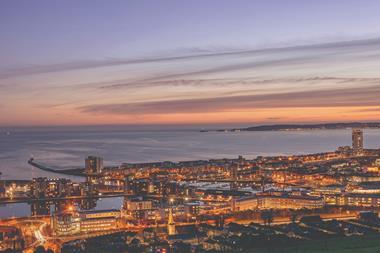While not without its challenges, 2021 was an exciting year. As the world’s focus moved away from the digital back to the physical again, we saw our streets in Marylebone fill with residents, commuters, shoppers and diners once more.

We welcomed new tenants and hosted in-person events again for the first time in a long time. While the presence – and indeed threat – of Covid-19 lingered, we continued to learn how to better manage it.
Some key trends have emerged over the past year.
Local and walkable
With restrictions on our movement in place for significant portions of 2020-21, we have seen an increased focus on the local – or what is walkable and immediately available to us in the vicinity of our homes.
Our focus on providing residents with a high-quality environment and set of amenities on their doorstep has therefore intensified of late.
In line with this, investment in public realm has become a greater priority. Last year, we started work on plans to upgrade the areas people enjoy as they walk around Marylebone. This included traffic calming measures, better crossings and improvements to green spaces.
We also turned our attention to enhancing connectivity for locals, extending the rollout of G Network’s fibre-optic to residential occupiers.
It was also announced in December that local businesses had voted in favour of London’s next Business Improvement District, the Harley Street Area. This will go live on 1 April 2022 and will bring in an investment of around £5m to Marylebone and the Harley Street area over the five-year term.
All of this represents a significant investment in improving residents’ day-to-day experience of their immediate environment.
Digital to physical
People were back in offices and shops to a greater extent in 2021. Some things, however, changed in the process.
Offices have seen two clear trends. First is the greater demand for occupier control over space. By this, we mean a move away from open-plan and shared, multi-occupier solutions to more secure, private spaces for companies, where they might have their own entrance and facilities.
Second, within these offices, we are experiencing stronger emphasis on collaborative zones over traditional desk space. After a prolonged period in the digital world, the focus on in-person contact is very clear. We will continue to adjust our commercial space in line with these evolving needs.
In terms of retail, we are seeing more digital-only brands turn to bricks and mortar for the first time. This is an estate trend that pre-dates but has been accelerated by Covid-19, with many online retailers thriving through lockdowns.
Pop-ups that can later be converted into permanent offerings, if appropriate, continue to allow brands to ‘test the waters’ here. Isabel Manns, a contemporary British womenswear designer, is one such name that successfully followed this path in Marylebone in 2021. This has changed the make-up of the estate’s offering and we expect to see more activity of this type in 2022.
Diversity and balance
The past year has also strengthened our conviction in the importance of diversity and balance. Exposure to the counter-cyclical, world-leading medical sector has meant consistent demand through the most challenging months, but our other sectors – retail and leisure, for instance – have been crucial to recovery, keeping the area an attractive place to live and work.
Maintaining the balance between these strands will remain a central part of our strategy this year.
Julian Best is executive property director at the Howard de Walden Estate





























No comments yet